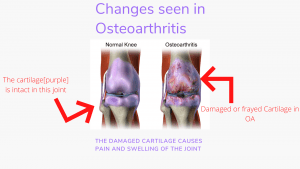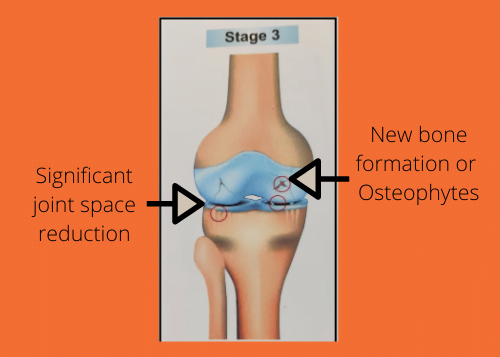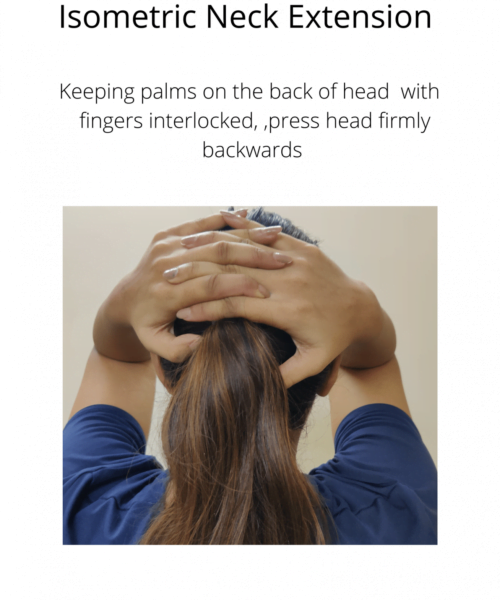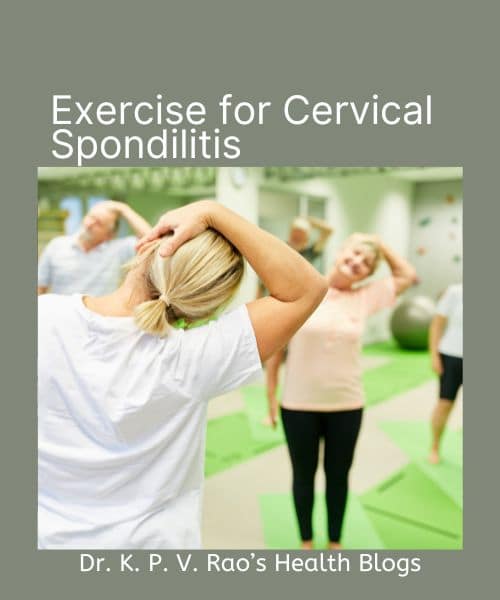Table of Contents
Most Effective Ways to treat Osteoarthritis [OA] – Medications
In my last article on Osteoarthritis, I wrote about the preventive aspect of the disease- in this article, I will be discussing the medication aspect.
Osteoarthritis pain can be debilitating and prevent one from doing some activities.
— Arthritis Disorders (@ArthritisDisord) December 9, 2020
How to treat Osteoarthritis with Medicines-
Before we jump on to the treatment part of osteoarthritis, let’s have a brief look at the picture shown below-

Now let us see how these changes appear in an X-ray picture of an Osteoarthritis joint-
![Most Effective Ways to Treat Osteoarthritis [OA]-Stagewise 1 Right knee joint xray showing osteoarthritis changes](https://raodoctor.com/wp-content/uploads/2019/12/X-ray-of-OA-of-Knee-207x300.jpg)
The 4 stages of OA-
Before we go on with the medication for osteoarthritis, let us quickly recall the various stages of OA as shown below-
Why is the staging of OA so important?
Different stages of OA have slightly different modes of treatment. In this article, I intend to inform you on both non-medical and medical line of treatment of all stages except the 4th stage. Stage 4 osteoarthritis mostly requires surgery, especially in the knees.
Useful Article: Stages of Osteoarthritis
The stage-wise treatment is as given below: –
A] Stage 1-
In this stage, the treatment is mostly non-medical. Meaning that very few medications are prescribed and they are mostly nutraceuticals. I mostly stress on exercises to relieve the stiffness in OA.
What do I advise my patients?
Medications are bare minimal at this stage. This is what I advise my patients:-
a] Exercises-
- Brisk walking for at least 30 to 45 minutes for knee OA.
- For early OA of hands, an exercise in a bowl of warm water is very effective[see below]
- Hip OA pains in the early stages are quite disturbing and exercise can help relieve pain gradually by strengthening the muscles and other structures supporting the hips. Here are 10 exercises which can help relieve pain as well as strengthen the muscles-watch this short video-

- For early OA of the spine, popularly known as spondylitis/spondylosis[Cervical{neck} and Lumbar{ lower back}], some of the exercises shown above work very well.
- Neck OA or cervical spondylitis pain can be relieved by these exercises as shown below-
- For OA of the lower back, I suggest this simple exercise-
![Most Effective Ways to Treat Osteoarthritis [OA]-Stagewise 2 Exercise For OA of Back](https://raodoctor.com/wp-content/uploads/2020/07/Add-a-heading-4-300x169.png)
Here is one more short video that shows that exercise helps in a lot in Osteoarthritis –
How to reduce/ease the pain of Osteoarthritis- what items help?

Apart from exercises, I have used these items to relieve pain and stiffness in my knee joint-
Both these items help in relieving pain and stiffness in osteoarthritis of the knees. They can be worn while walking.
The self-heating knee straps can be removed after getting sufficient heat-it should not be worn while sleeping.
These straps contain a substance called tourmaline which heats up when in contact with our skin.
The magnets in the strap help in healing the damaged cartilage.
For Stage1 OA of the neck spine or Cervical spondylitis
I usually prescribe a Cervical collar to prevent excessive movement [as shown below- middle image]
Similarly, for pain or back spasm, I have prescribed a lumbosacral [LS] belt and a heating pad to some of my patients [image on your right]. They give very good relief from stiffness and pain. Have a look-
b] Medications-
Pain in joints[hands, hips, knees, or the back] is the sole reason why patients visit me for treatment at my Clinic.
Medicines are prescribed mostly to relieve pain, stiffness, and swelling if any. However, they should be taken only under the supervision of your healthcare provider. These are some of the medicines which I regularly prescribe-
1] Non-steroidal Anti-inflammatory Drugs[NSAID]-
Drugs like diclofenac sodium [Voveran], naproxen[Naprosyn], ibuprofen[Brufen], nimesulide[Nise/Nimulid] etotodolac[Proxym ER 300] etc., come under NSAIDs[pronounced N-seds].
These medicines have got the ability to reduce pain as well as inflammation of the joints in Osteoarthritis. They should always be consumed after food, preferably with a little milk because they have the tendency to cause acidity and gastritis.
2] Proteolytic Enzymes-
A very good class of drugs-they have the ability to reduce swelling by breaking down the proteins which cause inflammation in OA. Examples of proteolytic enzymes are-
- Serratiopeptidase[ Emanzen, Cipzen]
- Trypsin Chymotrypsin[Chymoral, Enzoflam CT]
- Bromelain, Rutoside[these two can be used with trypsin chymotrypsin for better effect]. These are enzymes derived from the plants with excellent anti-inflammatory and antioxidant activities.
All of the above medicines, when combined with NSAIDs, have a very good pain-relieving and anti-inflammatory effect in Osteoarthritis.
3] Nutraceuticals-
Nutraceuticals[word derived from nutrition and pharmaceuticals] are substances that are derived from food that we eat, albeit in a concentrated form. They have been combined together in a tablet form for consumption. These are some of the nutraceuticals that I recommend regularly to my patients with Stage 1 OA-
a]Glucosamine Sulfate, Chondroitin Sulfate, and MSM[Methyl-Sulofonyl-Methane] -a boon for Osteoarthritis treatment–
All the above-mentioned substances are present naturally in the cartilages [read about it here] in most of our joints. They are a group of substances called Proteoglycans and they help in building and constantly repairing damaged cartilage. Thus consuming them becomes a part of Osteoarthritis treatment.
b] Curcumin, Omega 3 fatty acids –
Curcumin is easily available in our food as turmeric. Omega 3 fatty acids are available in fish oils as well as flaxseed oil and soybean oil.
These nutrients have both anti-inflammatories as well as painkilling properties. These are available in purified powdered form and are used for fortifying glucosamine and chondroitin tablets.
c] Collagen–
This is a protein that is found in skin, nails, tendons, bone, etc. Out of this, that found in the cartilage is called Undenatured Type II collagen. This collagen helps by relieving pain and stiffness, and improving mobility of the joints. They are used in conjunction with the above 2 mentioned nutraceuticals.
How do these nutraceuticals work in Osteoarthritis?
All these nutraceuticals are derived from cartilages of animals like cows, pigs, etc. They can also be manufactured artificially.
Most of these have similar properties and they help to-
- Reduce pain and inflammation
- Build new cartilage
- Repair the damaged cartilage
These medicines are available as Jointace C2+, Durajoint in the medical stores, and can be purchased without a prescription. However, I would advise you to consult your family physician regarding dosage which can vary from person to person.
Do I recommend Nutraceuticals for OA?
Yes, I do, and that too strongly.
There are many contrasting views regarding the use of these substances in the treatment of OA. But my experience is that they are very good. In my previous article on preventive management of OA, I had mentioned that I was diagnosed with knee OA Stage 2 in December 2016 after which I was advised to undergo TKR[total knee replacement] surgery after 2 years. I was practically limping while walking at that time.
What else do I recommend?
- Oils and liniments or rubefacients- Massaging at the site of joint pains with liniments and oils give relief in the form of providing warmth to the joint. Many such herbal oils are available in the market place and they provide excellent relief. I have personally used liniments like Arnopen[Phytopharma], Pain Relief[20 Microns], and ointments like Arthrella[Charak]. That brings me to the next medication-
- Ayurvedic preparations- The above-mentioned companies producing liniments also produce tablets and capsules which they claim to be effective. They contain ingredients like Boswellia Serrata, Curcumin, etc., which help in reducing pain and inflammation, albeit gradually. I recommend them to patients who are afraid to consume allopathic pain killers because of their side effects.
Here is a very good article that will help you overcome pain of Arthritis.
Finally, I would recommend you to listen to this interesting 🤔 podcast- link
How did I treat my knee Osteoarthritis?
I followed this method to reduce pain and stiffness and I advise my patients to do the same.
- Exercise to reduce my weight-I was 15% above my ideal body weight of 72 kg. I realized that this was putting tremendous stress on my knees.[For every extra Kg of body weight, the stress on knees increases by four folds]. Brisk walking for 45 to 6o minutes daily for 5 to 6 days a week helped me reduce this excess weight by 50%. I started noticing the effect it had on my knee pain-it had almost disappeared.
- Proxym ER 300 once a day and Zymogesic DS twice a day were taken to relieve pain and swelling. One month later the pain improved substantially.
What more did I do for my Knee Osteoarthritis?
With the above two regimens, I added a nutraceutical-Jointace C2+- which I am having to date. My pains, as well as limp, have gone and I still walk briskly daily.
This how I beat OA of my knees. I have pushed my TKR till further date i.e. as and when my OA pops up again or becomes unbearable.
There are a host of companies providing nutraceuticals for Osteoarthritis with different combinations. Here are some of the commercially available nutraceuticals for OA- Click Here.
To know more about these nutraceuticals click here
B] Stage 2 OA–
This stage usually occurs in the 30s and 40s. Treatment of this stage is the same as that of Stage 1 with an increased period of anti-inflammatory and proteolytic medication.
During this stage, I advise my patients a few more things to do-
- Avoid squatting. Squatting causes more wear and tear of an already degenerating knee and hip joint.
- Carry out quadriceps muscles strenghtening exercise- it helps reduce pain as well as increase mobility [ read here]
- Replace the Indian style commode by a western style one- this has the same effect as avoiding squatting.
I also prescribe a Calcium and Vitamin D supplement as I have observed changes of Osteoporosis[brittle bones] in these patients.
C] Stage 3 OA-
As we age, the metabolic process in our body slows down. This stage mostly occurs in the early 40s and 50s. The pain starts becoming unbearable. The disability increases.
The joint gets deformed due to fraying of cartilage[shown below]-
![Most Effective Ways to Treat Osteoarthritis [OA]-Stagewise 7 Bowed legs in osteoarthritis of Right Knee](https://raodoctor.com/wp-content/uploads/2019/12/Bowed-Legs-of-OA-150x150.jpg)
At this stage, I recommend all the medications in Stage I & II OA along with-
- Calcium supplements- to increase the density of bones around the joint
- Wearing of braces to correct the bowing of joints and use of a cane for support while walking[as shown below]-
These are very helpful to maintain balance in Stage 3 OA as patients tend to lose balance and can easily fall causing injury in the form of bone fracture as at this stage there is an increase of porosity of bones due to calcium deficiency. This is especially more so in women of post-menopausal age.
D] Stage 4 OA–
In this stage, the cartilage is almost absent [as shown in the X-ray picture at the beginning of the article]. The pain is more severe and patients have sleep disturbance.
There is no point in continuing the nutraceuticals. So along with anti-inflammatory pain killers, I recommend additional narcotic pain killers like Tramadol[Tramazac], Tapentadol[Tapnex ER 50], and liniments and oils.
These medications help in improving the quality of sleep as well as relieving pain substantially.
At this stage, I usually recommend that patients should go for TKR i.e. Total Knee replacement.
What is TKR?
TKR means replacing the damaged knee joint or hip joint by cutting the bones[ femur and tibia] at the joint level and replaced with artificial parts or prosthesis. By undergoing this operation, the patient gets tremendous relief from pain. The effectiveness of the operation depends on many factors such as-
- Age of the patient-the more aged the patient, less effective is the replacement
- Weight of the patient-obesity and overweightness causes failure of TKR in most cases
- Bone density of femur and tibia- Very important as the strength of the new joint depends on the strength of bones holding it.
What’s the latest news in the treatment of OA?
Research is on for a pain killer for Stage 3 and 4 OA. One such drug which is doing the rounds is Tanezumab- an injection that is administered subcutaneously[below the skin] in a dosage of 5mg/week.
Another interesting piece of news is that research is going on for using stem cells to regenerate the degenerated joint tissue of Osteoarthritis. For details, Click Here to read.
This medication, though showing great promise, is still under clinical trials. If approved, it can be a boon to those who could not be operated on.
Useful Article-Study Ranks Treatment for Osteoarthritis
With this, I come to the end of my series of articles on Osteoarthritis. If you have any questions or queries, you can join me by discussing the topic in the comment section of the blog.
Be sure to provide your e-mail address so that I can contact you personally to help you sort out your OA problems.
For more on Osteoarthritis, you can Read Here
And for all things to do about pain management – Read here.
I take a multivitamin, I take extra C, I take chondroitin and glucosamine for my joints, I take calcium for my bones. And by the way, weight-bearing exercises can help ward off osteoporosis and yoga helps ward off arthritis. Raquel Welch Share on X![Most Effective Ways to Treat Osteoarthritis [OA]-Stagewise 15 osteo](https://raodoctor.com/wp-content/uploads/2020/06/osteo.png)











![Most Effective Ways to Treat Osteoarthritis [OA]-Stagewise 3 GLA:D Australia - Best treatment for hip and knee arthritis](https://i.ytimg.com/vi/B2XMszQP_pY/hqdefault.jpg)
![Most Effective Ways to Treat Osteoarthritis [OA]-Stagewise 4 Cordless knee pad for osteoarthritis](https://raodoctor.com/wp-content/uploads/2023/03/cordless-multipurpose-heating-pad.jpg)
![Most Effective Ways to Treat Osteoarthritis [OA]-Stagewise 5 Cervical collar for Osteoarthritis of neck vertebtrae](https://raodoctor.com/wp-content/uploads/2020/07/Cervical-collar-1024x1024.jpg)
![Most Effective Ways to Treat Osteoarthritis [OA]-Stagewise 6 Heating pad for back 1](https://raodoctor.com/wp-content/uploads/2020/07/Heating-pad-for-back-1-1024x1024.jpg)